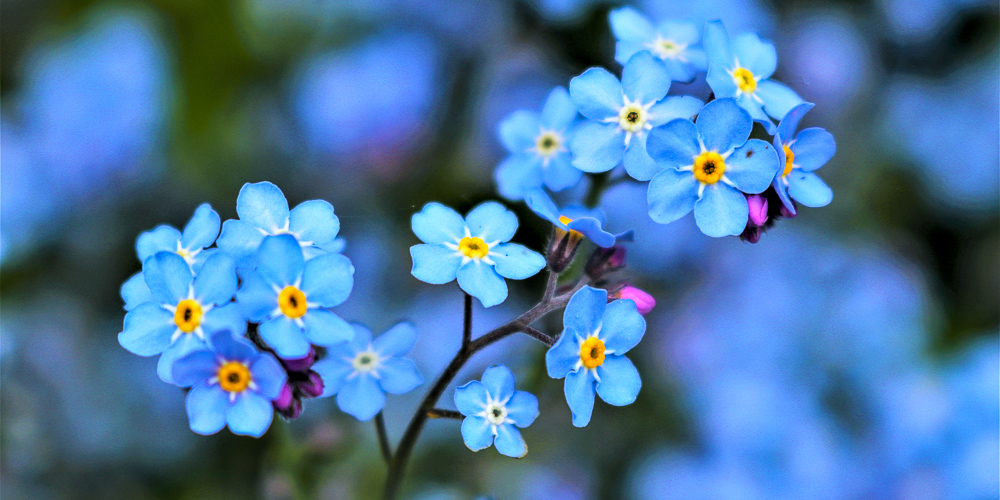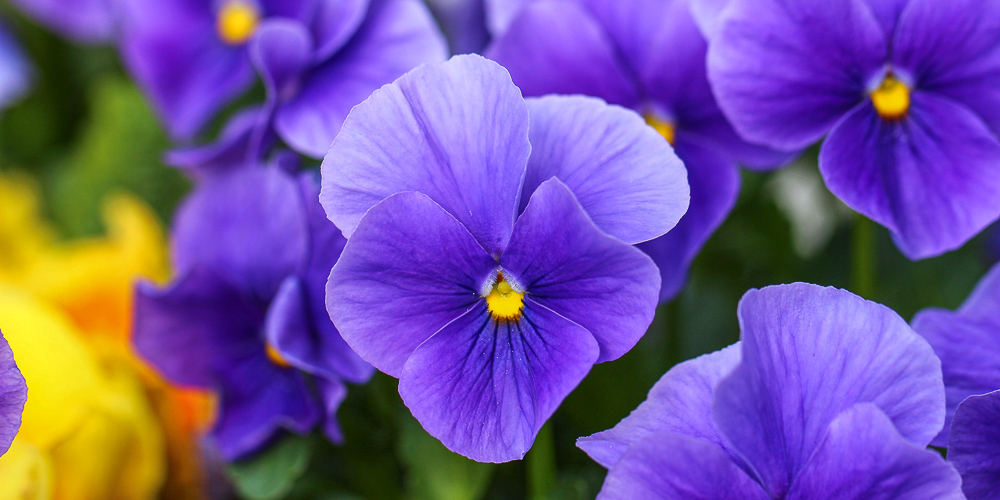Top 10 Early Bloomers
These 10 bulbs, perennials, or shrubs are hot out of the gate after a long and cold winter which makes them great candidates for your garden.
The nation’s premier color trend-setter – the New Jersey-based Pantone Color Institute – each year selects a “color of the year” that it believes represents and speaks to the time.
For 2022, that color is a new shade of blue with violet-red undertones called Very Peri.
The Institute’s executive director, Leatrice Eiseman, says the new Very Peri “brings a novel perspective and vision of the trusted and beloved blue color family, encompassing the qualities of the blues. Yet at the same time, with its violet-red undertone, it displays a spritely, joyous attitude and dynamic presence that encourages courageous creativity and imaginative expressions.”
Pantone Vice President Laurie Pressman adds that the new color also “reflects the global innovation and transformation taking place.”
To arrive at each year’s color of the year, the Institute scours trends and happenings in fields such as entertainment, art, fashion, design, travel, technology, and social media.
A fair number of plants bloom in blue, but some of the closest to the blue/red/violet blend of Very Peri are blue-violet hardy geraniums (such as Rozanne® and its more compact offspring, Azure Rush®), the spring-blooming perennial lungwort, aster ‘Bluebird,’ the baptisia varieties ‘Blue Mound’ and Decadence® ‘Blueberry Sundae,’ and several varieties of annual petunias and pansies.
The common groundcover vinca, nicknamed “periwinkle,” also blooms in this hue, although it’s listed as invasive in some states.
Closely related blue- or lavender/blue-blooming perennials include agastache ‘Blue Fortune’ and ‘Black Adder,’ amsonia, brunnera, campanula, catmint, creeping phlox ‘Blue Moon,’ forget-me-not, blue varieties of iris, leadwort, veronica, and Virginia bluebells.
Caryopteris is a blue-blooming shrub, the sterile varieties of rose-of-sharon Azurri Blue Satin® and Purple Satin® are blue-lavender bloomers, and dwarf sterile butterfly bushes such as Flutterby Petite®, Lo and Behold® ‘Blue Chip Jr.,’ and Lo and Behold® ‘Purple Haze’ bloom in shades of blue-purple.
Blue-blooming annuals include ageratum, blue salvia, browallia, scaevola, evolvulus Blue My Mind®, and osteospermum, while Siberian squill and Spanish bluebells are two bulbs that offer some of the earliest hints of blue in the landscape.

Forget Me Nots | Agnieszka Klimaszewska / iStock / via Getty Images
Veri Peri pairs well with anything in the blue family as well as its close color-wheel neighbor purple – and especially the violet side of that hue. That includes such flowering shrubs as purple and lavender lilacs, many varieties of blue to blue-purple clematis vines, and the annual hyacinth bean vine with its violet-purple, lima-bean-like seed pods.
Perennials that bloom in various shades of purple:
Purple-blooming annuals:
Purple-blooming bulbs:

Pansies | Fotolinchen / E+ /via Getty Images
Pink – especially the rosy and fuchsia warmer sides of the family – is another hue that marries well with Very Peri’s red-violet undertones.
Many varieties of clematis vines and climbing roses also flower in pink and rosy pink, while a few honeysuckle vines also bloom pink.
Pink and pink-lavender flowering shrubs:
Pink-blooming annuals:
Pink-blooming perennials:

Tulips | TatianaMironenko / iStock / via Getty Images
Pink-colored bulbs include tulips, dahlias, and hyacinths.
Even beyond the flowers, many plants have foliage that makes a good Very Peri partner. Besides the neutral greens that go with just about anything, plants with blue, blue-green, or silvery gray foliage are especially good choices.
Junipers offer some of the best, ranging from shorties like the rounded two-footer ‘Blue Star’ to spreaders such as ‘Grey Owl’ and ‘Silver Mist’ to uprights such as ‘Blue Point’ and ‘Blue Arrow.’
Korean fir, concolor fir, blue cedar, and Colorado blue spruce are four blue-needled tree partners.
Bayberry, blue hollies, dwarf blue spruce, and even some blue-tinted boxwoods are shrub-sized options, while blue fescue grass, blue-bladed varieties of switchgrass, and both big and little bluestem are grassy-textured options.
Blue- to silver-foliage perennials:
Dusty miller is the best-known silver-leafed annual, silver sage is a short-lived perennial with big, fuzzy, silver-gray leaves, and dichondra ‘Silver Falls’ and licorice vine are two silvery-gray annual vines that make good choices in pots or hanging baskets.